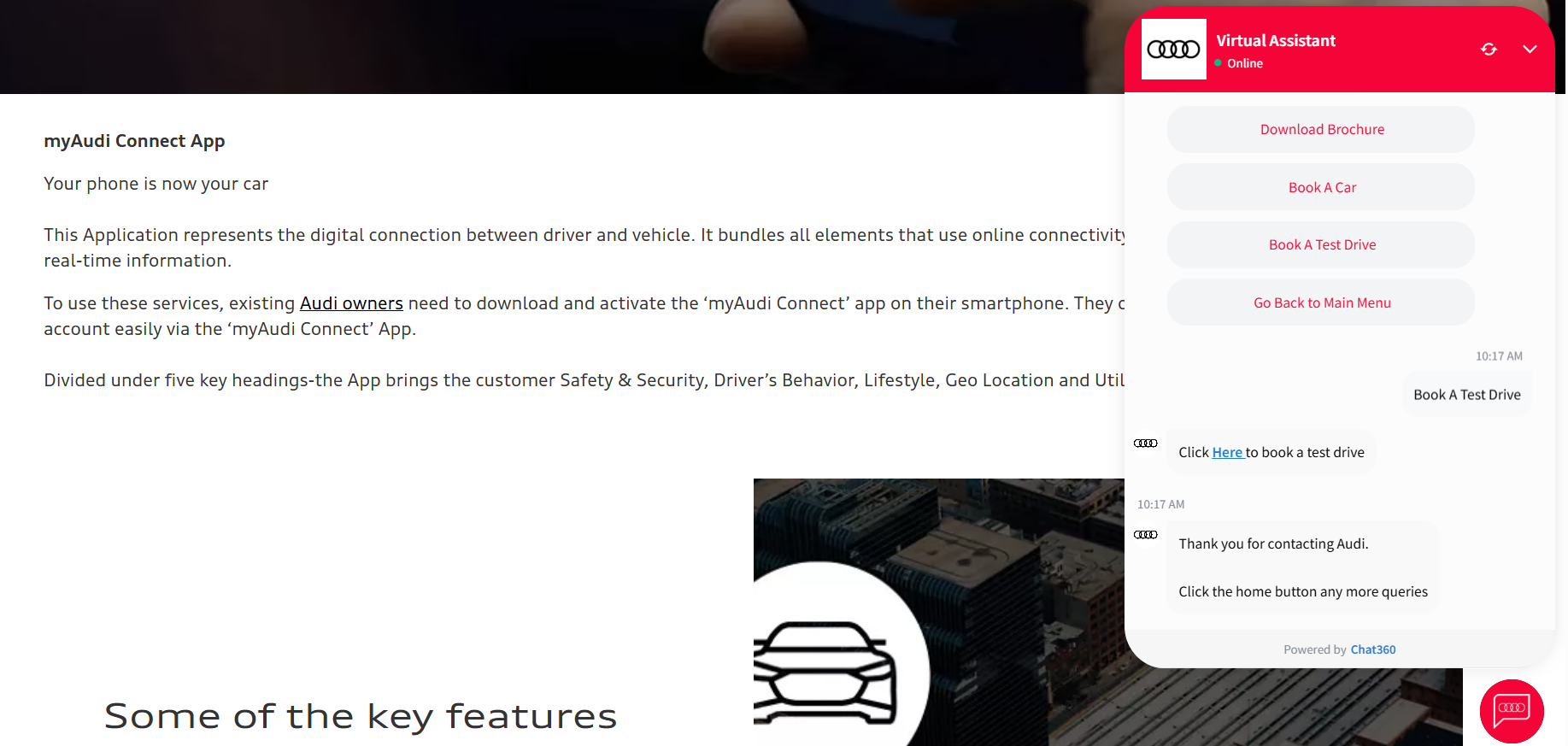Table of Contents


Want to Boost Rankings?
Get a proposal along with expert advice and insights on the right SEO strategy to grow your business!
Get Started- What Is Conversational Commerce?
- How It Actually Works
- The Benefits of Conversational Commerce
- Why Conversational Commerce Matters
- Conversational Commerce vs. Social Commerce
- Conversational Commerce Use Cases
- Real-World Conversational Commerce Examples
- The Challenges and Limitations (Because Nothing’s Perfect)
- Best Practices for Implementing Conversational Commerce
- How Generative AI is Shaping the Future of Conversational Commerce
- Should You Jump In?
- The Bottom Line
- FAQs
I’ll be honest with you, when I first heard the term “conversational commerce,” I thought it was just another buzzword that marketing folks came up with to sound clever.
But after diving deep into this space, I’ve realized it’s actually reshaping how we think about shopping online.
And trust me, if you’re running a business or just curious about where retail is headed, you’re going to want to understand this.
In this blog post, we’ll explore everything you need to know about conversational commerce, from what it actually means to real-world examples. Keep Reading!
What Is Conversational Commerce?
Let’s start with the basics.
Conversational commerce is essentially the intersection of messaging apps and shopping. It’s when you buy something or interact with a brand through a conversation, whether that’s texting with a chatbot, messaging a company on Facebook, talking to Alexa, or even getting shopping recommendations through WhatsApp.
The term was coined by Chris Messina (yes, the guy who invented the hashtag) back in 2015.
He described it as “utilizing chat, messaging, or other natural language interfaces to interact with people, brands, or services and bots that heretofore have had no real place in the bidirectional, asynchronous messaging context.”
Free SEO Audit: Uncover Hidden SEO Opportunities Before Your Competitors Do
Gain early access to a tailored SEO audit that reveals untapped SEO opportunities and gaps in your website.


How It Actually Works
It helps to take a quick peek under the hood. Once you understand what’s happening behind the scenes, the technology feels far less mysterious and a lot more exciting.
Natural Language Processing (NLP)
This is the AI technology that helps computers understand human language. When you type “I need a grey suit for an interview next month,” NLP helps the system understand that you’re looking for formal attire, in a specific color, with some urgency.
NLP handles things like intent recognition (what you’re trying to accomplish), entity extraction (pulling out specific details like colors, sizes, dates), and sentiment analysis (understanding if you’re happy, frustrated, or just browsing).
Machine Learning
Conversational commerce systems get smarter over time through machine learning. They learn from every conversation (Example: what responses work, what causes confusion, what leads to purchases). The more interactions they have, the better they become at predicting what customers need and how to help them.
Integration with Backend Systems
For conversational commerce to be truly useful, the chatbot or messaging interface needs to connect with inventory systems, payment processors, shipping providers, and customer databases. This integration is what allows you to check product availability, process payments, and track orders all within a single conversation.
Omnichannel Capabilities
The best conversational commerce platforms work across multiple channels. You might start a conversation on a website chatbot, continue it on WhatsApp later that evening, and follow up via SMS when your order ships. The system maintains context across all these touchpoints.
The Benefits of Conversational Commerce
So why should businesses care about conversational commerce? And why should customers embrace it?
Let me break down the benefits from both perspectives.
For Businesses
Always-On Customer Service: Your chatbot never clocks out. It stays active and alert around the clock, engaging customers whenever they reach out, even when your team is offline or your audience spans multiple time zones.
Scalability: A single human agent can only handle a limited number of conversations at a time. A well-designed bot can handle thousands simultaneously. As your business grows, your conversational commerce system can scale without proportionally increasing costs.
Personalization at Scale: The best conversational commerce platforms remember customer preferences, purchase history, and previous conversations. They can offer personalized recommendations that feel tailored to each individual, even when serving millions of customers.
Higher Conversion Rates: When customers can get their questions answered immediately, they’re more likely to complete a purchase. The conversational format also reduces friction in the buying process. Instead of navigating through multiple pages, customers can just say what they want.
Rich Customer Data: Every conversation generates valuable data about what customers want, what problems they face, and how they prefer to shop. This intelligence can inform everything from product development to marketing strategy.
Lower Cart Abandonment: One of the biggest problems in e-commerce is cart abandonment. Conversational commerce can reduce this by proactively reaching out when someone seems stuck, answering last-minute questions, or offering assistance with checkout.
For Customers
Convenience: You can shop from wherever you already are—in your messaging app, on your smart speaker, or on a website. No need to download yet another app or remember another password.
Speed: Getting an instant answer to “Does this come in blue?” or “What’s the return policy?” is much faster than digging through FAQ pages or waiting on hold.
Personalized Experience: Good conversational commerce feels like shopping with a knowledgeable assistant who remembers you and understands your preferences.
Less Overwhelming: Instead of being presented with hundreds of options at once, you can have a guided conversation that narrows down choices based on what you actually need.
Natural Interaction: Typing or speaking naturally feels more intuitive than navigating complex menus and filters. You can ask questions the way you’d ask a friend.
Why Conversational Commerce Matters
People are already living inside messaging apps. Think about your own behavior. How many times a day do you check WhatsApp or Instagram? For most of us, it’s dozens, if not hundreds, of times.
The numbers back this up.
Messaging apps have overtaken social networks in terms of active users. We’re talking about billions of people who are already comfortable having conversations in these spaces.
So it makes perfect sense that shopping would eventually follow us there.
But there’s something deeper going on, too.
After years of browsing impersonal websites and apps, people crave more human interactions, even when shopping online. We want to ask questions, get recommendations, and feel like someone actually understands what we’re looking for. Conversational commerce brings back that personal touch that brick-and-mortar stores used to have.
Conversational Commerce vs. Social Commerce
While both conversational commerce and social commerce focus on selling through digital channels, they take different approaches.
Conversational commerce involves one-on-one interactions with customers through messaging apps, chatbots, or voice assistants, offering personalized recommendations, support, and direct purchases via conversation.
In contrast, social commerce focuses on selling products directly through social media platforms like Instagram, Facebook, or TikTok, often leveraging posts, stories, ads, and influencer marketing to drive sales.
Social commerce draws people in, while conversational commerce turns interest into action, boosting satisfaction, trust, and sales.
Brands that combine both can not only attract more customers but also deliver a seamless, personalized shopping experience that keeps them coming back.
Conversational Commerce Use Cases
Now that we have a pretty good understanding of conversational commerce, let’s talk about where it actually makes a difference. Because honestly, technology for technology’s sake is pointless, and what matters is how it solves real problems for real people.
Retail & E-commerce

In the retail sector, conversational commerce transforms how customers discover and buy products.
Chatbots and virtual assistants analyze browsing behavior and purchase history to surface relevant recommendations, letting shoppers ask questions and complete transactions without ever leaving their preferred messaging app.
Beyond the transaction itself, these interfaces keep customers engaged through timely notifications about promotions, discounts, and loyalty rewards.
Travel & Hospitality

Conversational commerce in travel and hospitality simplifies the booking and planning process for customers.
Messaging platforms enable users to book flights, accommodations, and activities directly, eliminating the need to visit multiple websites.
Need real-time guidance on destinations or local services? The chatbot handles that too.
After the trip, these same platforms collect feedback that helps businesses refine their offerings and build stronger customer relationships.
Banking & Financial Services

Financial institutions use conversational commerce to make account management and transactions more efficient.
Chatbots and AI assistants enable customers to check balances, view transaction histories, transfer funds, and pay bills through messaging platforms or mobile apps. They also provide guidance for budgeting, savings, and other financial decisions.
Conversational interfaces can deliver alerts for unusual account activity, facilitate loan or insurance applications, and provide initial assistance before human intervention is required, improving both convenience and security for customers.
Food & Beverage

In the food and beverage sector, conversational commerce streamlines the ordering and delivery process.
Chatbots allow customers to place and customize orders, receive updates on status, and interact with menus in real-time.
Conversational platforms also provide suggestions based on preferences and can collect post-service feedback to improve quality and satisfaction.
Healthcare & Wellness

Conversational commerce supports healthcare providers in patient engagement, appointment management, and guidance.
Chatbots can schedule appointments, provide reminders for treatments or medications, and offer initial assessments of symptoms or conditions. These systems reduce administrative burdens while providing immediate access to relevant healthcare information.
Telecommunications
Telecommunication companies leverage conversational commerce to simplify service management and customer support.
Customers can manage plans, monitor usage, pay bills, and troubleshoot issues through chat platforms. Conversational systems also provide proactive updates regarding service changes or promotions, allowing customers to stay informed.
Automotive

Conversational commerce in the automotive sector enhances both the buying and ownership experience.
Chatbots guide customers through vehicle selection, configuration, and financing options, while facilitating service scheduling and maintenance reminders.
Fashion & Lifestyle

Fashion and lifestyle brands use conversational commerce to provide interactive and personalized shopping experiences.
Chatbots assist users in discovering products, selecting sizes, and making styling decisions, helping reduce returns and increase satisfaction.
Conversational interfaces also integrate with social and messaging platforms, allowing customers to browse and make purchases seamlessly. This approach enhances customer engagement and strengthens brand loyalty through real-time, tailored communication.
Real-World Conversational Commerce Examples
Here are some examples of companies doing conversational commerce really well.
1. Domino’s – AI Voice & Chat Ordering
Platforms: Mobile App, Phone, Alexa, Google Assistant
Overview: Domino’s has enhanced its voice ordering system using AI that processes natural conversations, including regional accents and colloquialisms.
Key Features:
- AI handles ~80% of phone orders in North America.
- Remembers past orders for easy reordering.
- Integrates with voice assistants for hands-free ordering.
Impact: Improves operational efficiency and customer satisfaction by making ordering faster and more natural.
2. Sephora – AI Beauty Chatbots
Platforms: Facebook Messenger, Website, Mobile App, In-Store Interfaces
Overview: Sephora’s AI chatbots provide personalized beauty advice, virtual try-ons, and appointment bookings.
Key Features:
- Virtual Artist for real-time makeup try-ons.
- Smart Skin Scan analyzes skin conditions in seven categories.
- Multilingual support and appointment booking.
Impact: Increases customer engagement, online sales, and in-store visits.
3. H&M – AI Chatbots & Digital Twins
Platforms: Mobile App, Website, Social Media
Overview: H&M uses AI chatbots and digital twins to provide personalized fashion recommendations.
Key Features:
- Chatbots guide customers through style preferences.
- Digital twins display clothing virtually.
- Style assistant suggests complete outfits for cross-selling.
Impact: Boosts online sales, improves engagement, and strengthens brand loyalty.
4. Zara – AI-Driven Fashion Recommendations
Platforms: Mobile App, Website
Overview: Zara leverages AI chatbots to provide real-time fashion suggestions and inventory-aware recommendations.
Key Features:
- Personalized outfit suggestions based on user history.
- Integration with store inventory to show available sizes and locations.
- Push notifications for promotions and new arrivals.
Impact: Improves conversion rates, reduces purchase friction, and provides seamless omnichannel experiences.
(Source)
5. Agentic Payments via ChatGPT (India)
Overview: Collaboration between NPCI, Razorpay, and OpenAI enables e-commerce payments directly within ChatGPT using UPI.
Key Features:
- Discover, select, and pay without leaving ChatGPT.
- Secure AI-driven UPI transactions.
- Pilot program includes major Indian e-commerce platforms.
Impact: Creates frictionless shopping and payment experiences in India.
6. Walmart – AI Chatbot Sparky
Overview: Sparky assists customers with personalized shopping guidance and event planning.
Key Features:
- Tailored product recommendations.
- Integration with Walmart+ membership for enhanced benefits.
- Improves shopping efficiency with AI-powered suggestions.
Impact: Enhances personalization, customer satisfaction, and engagement.
7. Amazon – Alexa+ with Generative AI
Overview: Alexa+ improves conversational AI with context awareness and memory of user preferences.
Key Features:
- Generative AI for dynamic interactions.
- Enhanced smart home integration.
- Multi-device compatibility (Echo Show 8, Echo Dot Max, etc.).
Impact: Offers seamless voice commerce experiences and deeper engagement.
8. Zorro.lv – AI Sales Concierge
Overview: AI-powered concierge re-engages churned customers via WhatsApp and Shopify.
Key Features:
- Personalized messages and product recommendations.
- Integration with Shopify for seamless product linking.
- Boosts retention by reconnecting inactive users.
Impact: 31% of churned customers were successfully re-engaged.
9. Canon – AI-Powered Product Advisor
Overview: AI advisor helps customers select cameras and accessories based on preferences and use cases.
Key Features:
- Guided selling via conversational AI.
- Tailored recommendations based on style, needs, and budget.
Impact: Improves conversion and customer satisfaction through personalized assistance.
10. Bosch – AI Chatbot for Industrial Solutions
Overview: AI chatbot Frizz educates clients on industrial solutions and AI applications.
Key Features:
- Interactive learning about AI applications.
- Guidance on selecting industrial solutions.
- Educational tool for B2B customers.
Impact: Streamlines B2B decision-making and enhances customer understanding.
The Challenges and Limitations (Because Nothing’s Perfect)
I’d be doing you a disservice if I didn’t talk about the obstacles and challenges. Conversational commerce isn’t a magic solution, and it comes with real hurdles.
The AI Isn’t Always Smart Enough
Despite all the advances in AI, chatbots can still be frustratingly dumb sometimes. They often misunderstand questions or get stuck in loops. We’ve all had that experience of repeatedly typing “I WANT TO TALK TO A HUMAN” while a bot cheerfully misunderstands us.
The technology is improving rapidly, but there’s still a gap between what customers expect and what AI can deliver. This is why the hybrid approach, that is, bots for simple stuff, humans for complex issues, usually works best.
Privacy and Security Concerns
When you’re conducting transactions through messaging apps, you’re sharing sensitive information. Companies need robust security measures, and customers need to trust that their data won’t be misused.
There’s also the question of how conversation data is used. Are your chats being analyzed? Stored? Used for advertising? Companies need to be transparent about this.
Building It Isn’t Easy or Cheap
Creating a good conversational commerce experience requires significant investment. You need the right technology, integration with existing systems, ongoing training and optimization, and probably a team to manage it all. For small businesses, this can be a barrier to entry.
Not Everyone Likes It
Some people simply prefer browsing at their own pace without interaction. Not every shopping journey needs to be conversational. Forcing conversation when someone just wants to quickly browse and buy can actually create friction rather than reduce it.
Language and Cultural Barriers
Conversational AI works best in English and a few other major languages. For businesses serving diverse customer bases, supporting multiple languages at a high quality level is challenging. There are also cultural nuances in how people prefer to communicate that can be tricky to navigate.
Complex Products Are Harder to Sell
Some products require detailed research and complex configuration. While conversational interfaces can help, they’re not always the best format for these scenarios. Try designing a custom computer through a chatbot, and you’ll see what I mean.
Best Practices for Implementing Conversational Commerce
If you’re thinking about implementing conversational commerce for your business, here are some lessons I’ve gathered from companies that do it well.
Start with Clear Use Cases
Don’t try to do everything at once. Identify specific pain points or opportunities where conversation would genuinely help. Maybe it’s answering common pre-purchase questions, helping with size selection, or streamlining reorders. Start there and expand gradually.
Design for Natural Conversation
Your bot shouldn’t sound like a robot reading from a script. Use natural language, contractions, and even appropriate humor. At the same time, be clear about what the bot can and can’t do. It’s better to set realistic expectations up front than to frustrate users.
Always Provide a Human Escape Hatch
No matter how good your AI is, there should always be a clear, easy way to reach a human. Nothing frustrates customers more than being trapped in a conversation with an unhelpful bot.
Keep It Visual
Just because it’s “conversational” doesn’t mean it has to be text-only. Use images, carousels, quick-reply buttons, and other visual elements to make the experience richer and easier. A picture of a product is worth a thousand words of description.
Remember Context
Your conversational commerce system should remember previous interactions, preferences, and purchase history. If I bought shoes from you last month, don’t make me re-enter my size when I come back.
Test, Measure, Iterate
Launch with a minimum viable product and improve based on real user interactions. Look at where conversations break down, what questions stump the bot, and where customers abandon. Use this data to continuously improve.
Be Transparent
Let users know when they’re talking to a bot versus a human. Be clear about how their data will be used. Transparency builds trust.
Integrate Across Channels
Don’t make conversational commerce a siloed experience. It should connect seamlessly with your website, app, email, and physical stores if you have them. Customers shouldn’t feel like they’re starting over when they switch channels.
How Generative AI is Shaping the Future of Conversational Commerce
Generative AI is changing the way businesses interact with customers, taking conversational commerce to a whole new level.
In the realm of conversational commerce, this technology is at the heart of the shift from transactional interactions to genuinely engaging, personalized experiences. It allows brands to automate customer interactions and respond to unique requests in a way that feels human. This frees internal teams from routine tasks while still delivering the kind of attention and relevance that customers increasingly expect.
One of the most exciting developments in recent years has been the rise of agentic commerce.
Unlike traditional AI that simply reacts to inputs, agentic AI can work autonomously toward a goal: learning, adapting, making decisions, and even collaborating with other AI agents to achieve complex objectives.
For businesses, this means new ways to engage customers while simultaneously improving efficiency behind the scenes. It’s no longer just about answering questions—it’s about anticipating needs, offering solutions proactively, and creating experiences that feel thoughtful and intuitive.
Before these advancements, conversational commerce had significant limitations.
Early chatbots could handle simple keyword queries but often struggled with natural language or nuanced requests. Asking a bot, “Can you help me return this product I bought last week?” might have produced confusing or unhelpful results, whereas simpler, more rigid phrases were more likely to succeed. Generative AI has changed that.
Now, conversational commerce can truly understand human language, engage in back-and-forth dialogue, and respond meaningfully, turning interactions into real conversations rather than mechanical exchanges.
Beyond text, generative AI is enabling multimodal interactions.
Customers can interact via voice, images, or even video, making it possible to ask questions, share visual references, or receive guidance in more natural, intuitive ways.
Combined with predictive capabilities, AI can anticipate customer needs, suggest complementary products, or follow up on incomplete purchases without waiting for a prompt. The result is a conversational experience that is not only more efficient but also far more engaging.
Generative AI also helps brands deliver personalized experiences at scale. Each customer can receive tailored recommendations, guidance, and messaging simultaneously, creating an individualized experience that would be impossible to achieve with human agents alone.
When integrated across websites, mobile apps, and messaging platforms, this creates a seamless omnichannel experience, ensuring that every interaction feels consistent and cohesive.
Should You Jump In?
So, should your business invest in conversational commerce? And as a consumer, should you embrace it?
For businesses, I would say yes, but thoughtfully. Conversational commerce isn’t going away. Customer expectations around instant, personalized service are only increasing. However, you must implement it in a way that genuinely serves your customers and aligns with your brand. Don’t do it just because it’s trendy.
Start small by focusing on clear use cases where you can provide real value, and then build from there.
Even a simple chatbot that answers common questions can make a difference in customer satisfaction and sales.
For consumers, conversational commerce offers genuine benefits when done right. It’s faster, more convenient, and can feel more personal than traditional e-commerce. Just be mindful of privacy, and don’t hesitate to ask for human help when you need it.
The Bottom Line
Conversational commerce represents a fundamental shift in how we think about online shopping. It’s not about replacing websites or apps, it’s about adding a new layer of interaction that’s more natural, more immediate, and more personal.
We’re still in the early stages. The technology will continue to improve, new use cases will emerge, and customers will become more comfortable shopping through conversation. But the core insight is here to stay: people want to communicate naturally when they shop, just like they do in every other part of their lives.
No matter if you are building a business or just trying to buy a new pair of shoes, conversational commerce is changing the game for real. And honestly, it’s mostly for the better. It’s bringing back some of the human touch that online shopping lost, while maintaining all the convenience of digital commerce.
FAQs
How does conversational commerce benefit businesses?
Conversational commerce helps businesses provide instant support, increase customer engagement, boost sales conversion rates, and gather valuable insights about customer preferences, all while reducing friction in the buying process.
Which platforms are commonly used for conversational commerce?
Popular conversational commerce platforms include WhatsApp, Facebook Messenger, Instagram Direct, SMS, live chat on websites, and voice assistants like Alexa or Google Assistant. AI chatbots are often integrated to automate responses and streamline transactions.
Is conversational commerce secure for payments?
Yes. Most conversational commerce solutions use secure payment gateways and encryption protocols to protect customer information. Businesses must ensure compliance with standards like PCI DSS to safeguard sensitive payment data.
Can small businesses implement conversational commerce easily?
Absolutely. Many affordable chatbot and messaging tools are available that don’t require heavy technical expertise. Small businesses can leverage these platforms to provide personalized customer service, send product recommendations, and even complete sales directly within the chat interface.
What are the latest conversational commerce trends?
Conversational commerce is evolving with AI-powered personalization, omnichannel interactions across messaging apps and social media, and the rise of voice commerce through smart assistants. Brands are increasingly using proactive messaging to engage customers and exploring AR/VR integrations to let shoppers visualize products during conversations.
About the author
Share this article
Find out WHAT stops Google from ranking your website
We’ll have our SEO specialists analyze your website—and tell you what could be slowing down your organic growth.

















